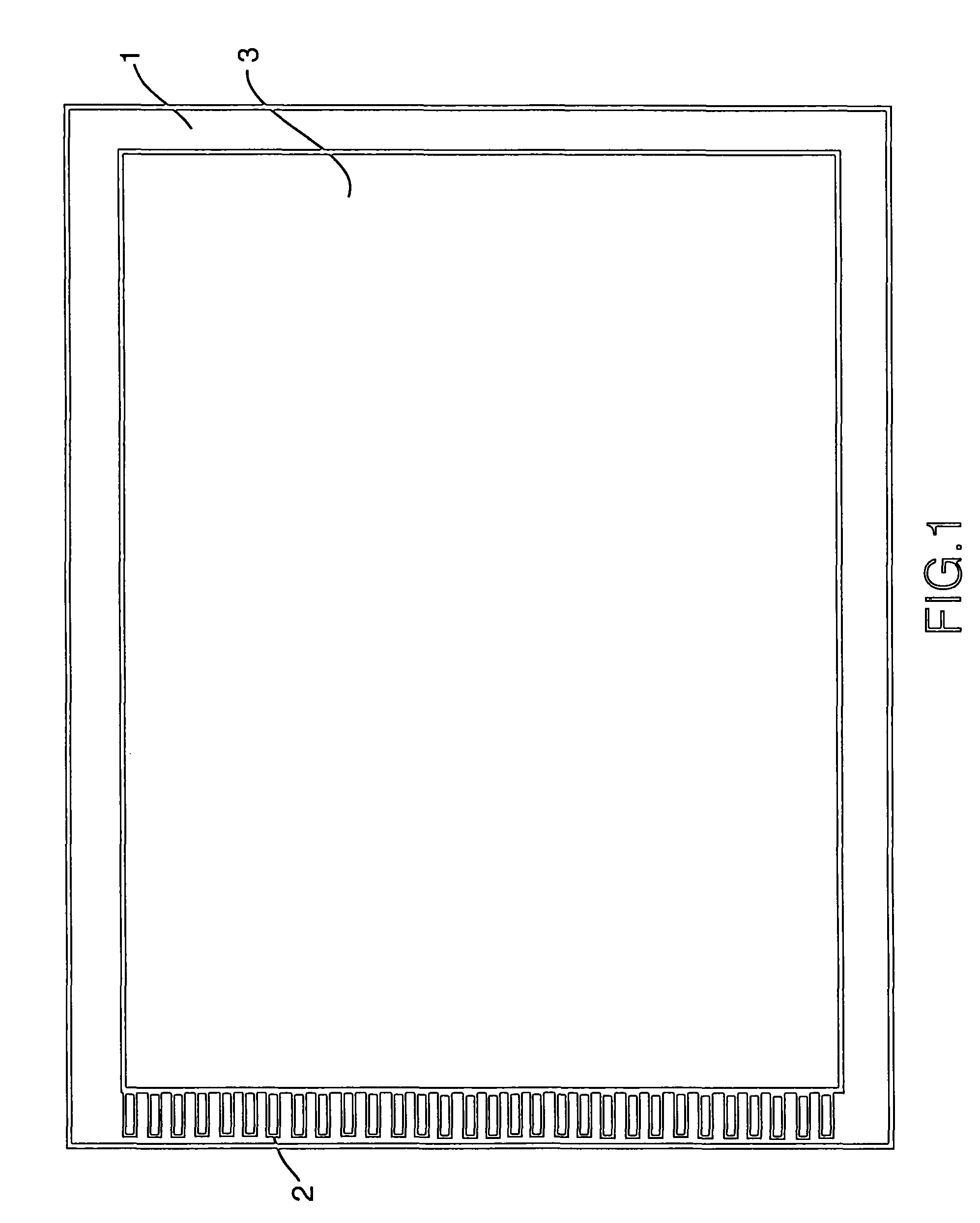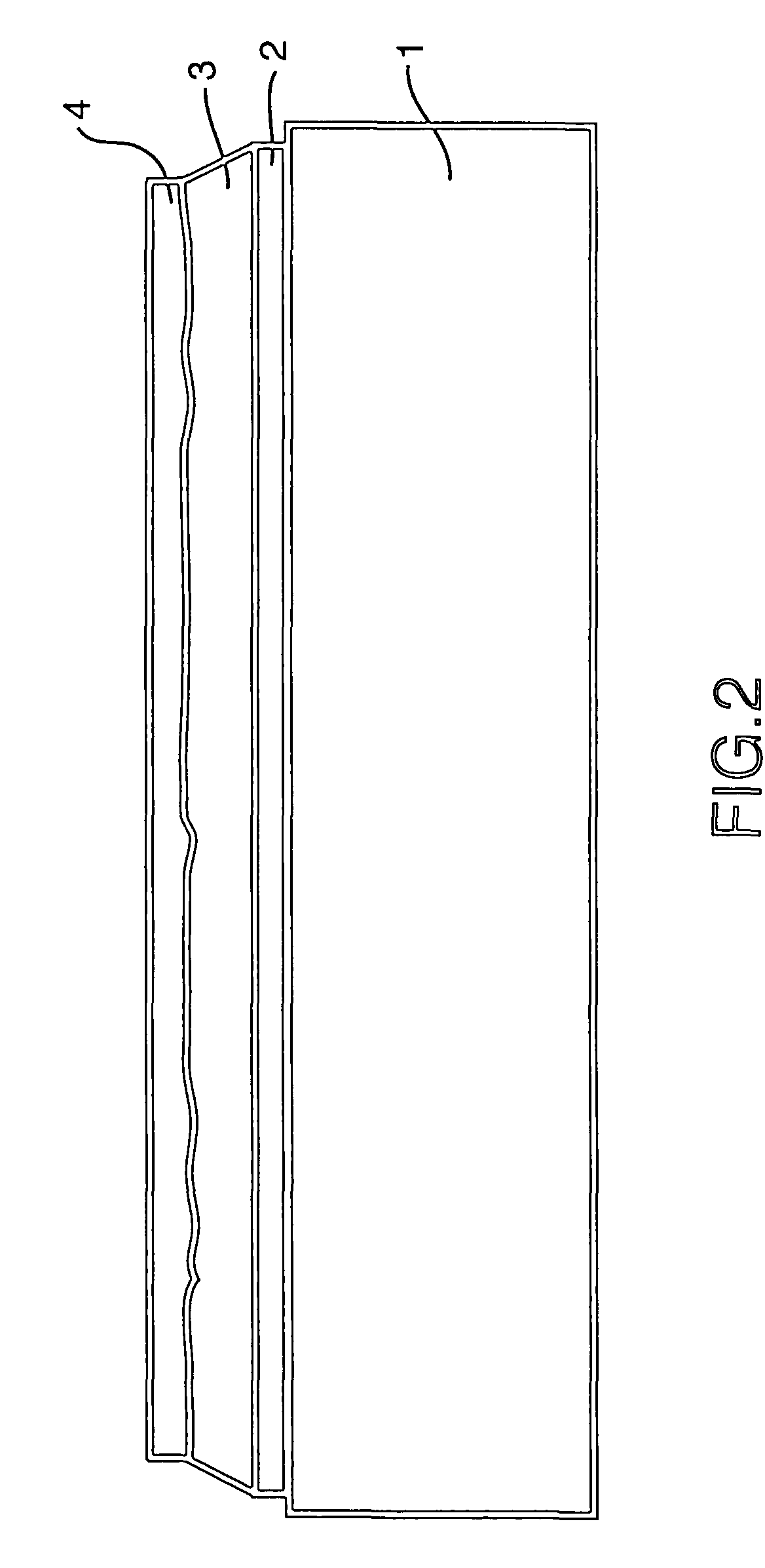Thick film dielectric structure for thick dielectric electroluminescent displays
a dielectric structure and electroluminescent display technology, applied in the direction of discharge tube luminescnet screens, discharge tube/lamp details, coatings, etc., can solve the problems of film dielectric layer still having residual porosity, overlayer not completely filling the porosity of sintered material, and increasing the display area. , to achieve the effect of reducing the density of surface defects, improving the smoothing layer, and facilitating wetting of the underlying
- Summary
- Abstract
- Description
- Claims
- Application Information
AI Technical Summary
Benefits of technology
Problems solved by technology
Method used
Image
Examples
example 1
[0059]With reference to the schematic diagrams of FIG. 1 and FIG. 2, a set of gold row electrodes 2 and a thick film dielectric layer 3 for a 43 centimeter diagonal electroluminescent display were constructed on a PP8C glass substrate 1 obtained from Nippon Electric Glass Co. Ltd. of Osaka Japan. The methods for deposition of the row electrodes and the thick dielectric layer were similar to the methods described in U.S. patent application Ser. No. 09 / 326,777 in combination with the methods described herein. The gold electrode layer was deposited onto the substrate prior to deposition of a thick film dielectric layer. The thick film dielectric layer was formed of two sequentially formed layers with the process for depositing each layer consisting of printing a thick film paste, drying the printed layer, densifying the printed layer using isostatic pressing and finally sintering the densified layer. The densification process was carried out using cold isostatic pressing as taught in U...
example 2
[0062]A composite thick dielectric structure was constructed on a substrate similar to that described in example 1, except that a MOD solution without surfactant added and with a viscosity of 15 to 40 centipoise was used in place of the MOD solution for the first MOD layer as described in Example 1.
[0063]The surface of the completed composition dielectric layer was examined under a microscope. A photomicrograph of the surface is shown in FIG. 4. The areal density of defects is about 3500 defects per square centimeter. Compared to the surface shown in FIG. 3, the surface of the MOD layer shows a large number of defects (pits and indentations) evident in the photomicrograph, showing the utility of the surfactant containing MOD solution described in example 1 in dramatically reducing the number of surface defects. FIG. 5 shows a histogram with the number of defects for several 0.15 square millimeter sections of a thick dielectric layer made according to the method of the prior art with...
PUM
| Property | Measurement | Unit |
|---|---|---|
| dielectric constant | aaaaa | aaaaa |
| temperatures | aaaaa | aaaaa |
| total thickness | aaaaa | aaaaa |
Abstract
Description
Claims
Application Information
 Login to View More
Login to View More - R&D
- Intellectual Property
- Life Sciences
- Materials
- Tech Scout
- Unparalleled Data Quality
- Higher Quality Content
- 60% Fewer Hallucinations
Browse by: Latest US Patents, China's latest patents, Technical Efficacy Thesaurus, Application Domain, Technology Topic, Popular Technical Reports.
© 2025 PatSnap. All rights reserved.Legal|Privacy policy|Modern Slavery Act Transparency Statement|Sitemap|About US| Contact US: help@patsnap.com



